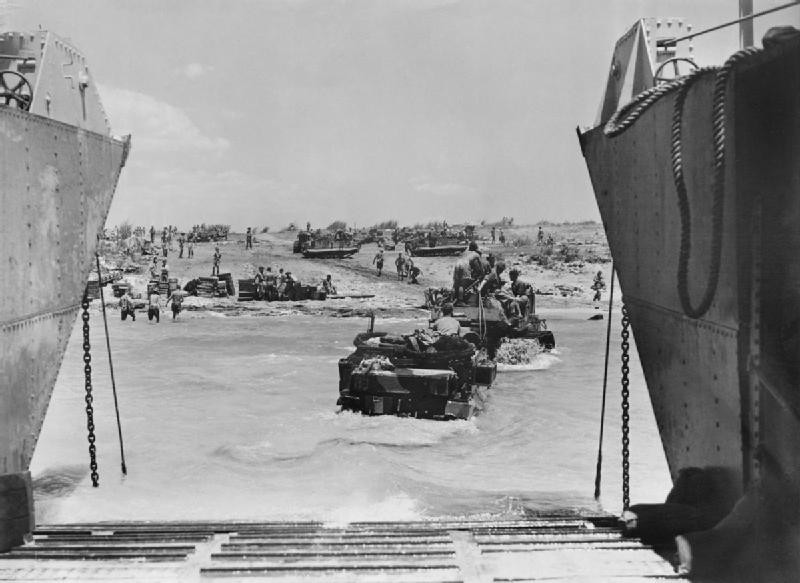The Biscari Massacre

Wikimedia CommonsThe Allies land on the beaches of Sicily at the outset of their invasion on July 10, 1943. Four days later, U.S. troops carried out the two sets of killings now known as the Biscari massacre.
On July 10, 1943, nearly a year before D-Day, the Allies invaded Sicily, commanded in part by General Omar Bradley and General George S. Patton, in one of their first triumphant moves to take back Europe. Just four days later, however, American soldiers would commit one of the largest illegal massacres on the Allies side of the war.
In two separate incidents on July 14, American soldiers slaughtered a total of 73 prisoners of war (71 Italian and two German) in Santo Pietro. Collectively, these killings have become known as the Biscari massacre, named for the airfield that the Americans were trying to capture.

Wikimedia CommonsGeneral Omar Bradley.
The first incident transpired shortly after 10 a.m. under the command of Sergeant Horace T. West. His men stormed the airfield and taken more than 40 prisoners when he ordered that a few be sent to the regimental intelligence officer for questioning. The other prisoners weren’t so lucky.
West marched them away from the road, lined them up, and borrowed a submachine gun from the First Sergeant. When the First Sergeant asked why West wanted the gun, he replied that he was going to “kill the sons of bitches,” then added, “turn around if you don’t want to see it.”
West then shot all 37 men, most through the heart at close range. Investigators would later learn that, during the slaughter, he “stopped to reload, then walked among the men in their pooling blood and fired a single round into the hearts of those still moving.”
A little later in the day, elsewhere in the same battle, Captain John T. Compton and his men took 36 prisoners following a firefight. What’s still not clear even today is just how many of those men had been acting as snipers during that firefight. Some of the 36, in fact, were dressed in civilian clothing.
When the American interpreter asked the prisoners if they had been shooting, he got no response. But when Compton asked his lieutenant if these men had been shooting, the latter answered in the affirmative.
“Get them shot,” Compton then replied, adding that he “didn’t want a man left standing when the firing was done.” There indeed wouldn’t be.

Wikimedia CommonsGeneral George S. Patton.
Not long after, when General Omar Bradley informed commanding General George S. Patton of the massacres, Patton brushed him off, noting in his diary that:
I told Bradley that it was probably an exaggeration, but in any case to tell the Officer to certify that the dead men were snipers or had attempted to escape or something, as it would make a stink in the press and also would make the civilians mad. Anyhow, they are dead, so nothing can be done about it.
But when Bradley persisted, Patton gave in. And when the Inspector General concluded that the prisoners had been illegally slaughtered, Patton simply said, “Try the bastards.”
West was convicted and sentenced to life in prison, only to have his sentence remitted a year later, at which point he returned to active duty and finished out the war with an honorable discharge. Compton, on the other hand, was acquitted in his court-martial, while the Judge Advocate’s office later claimed that he had acted unlawfully.
But more so even than West and Compton, the man who truly got away with something may have been Patton. During the investigations, both West and Compton named Patton as the man who had instructed everyone before the Sicilian invasion to take prisoners (in other words, not simply execute them) only under very limited circumstances.
The Inspector General’s office then investigated and questioned Patton, one of the most powerful and beloved figures in the entire U.S. military, but ultimately cleared him of any wrongdoing.





